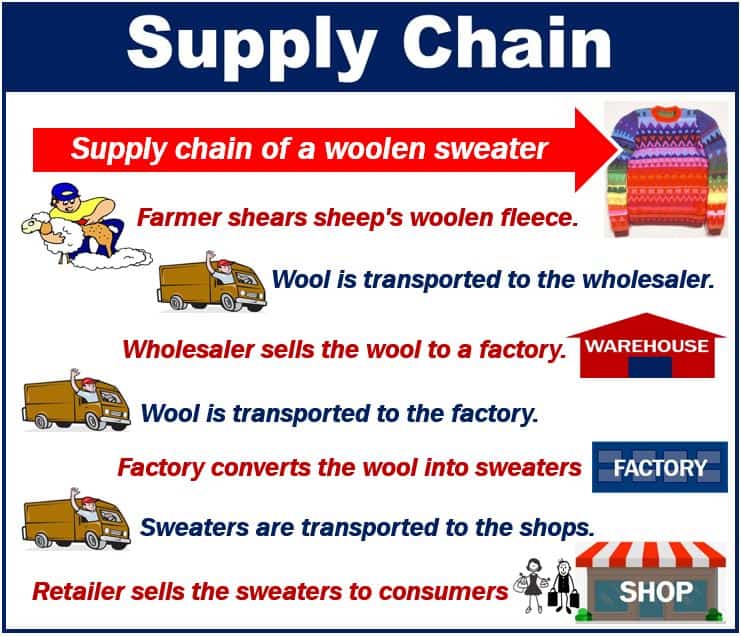The supply chain is the whole network of entities that participate in getting a product from its origin to a customer. The supply chain starts with extracting the raw material and goes all the way to delivering the finished product to the consumer.
In other words, it includes the vendors that supply raw materials and manufacturers that convert the raw materials into products. It also comprises warehouses that store the products, distribution companies, and retailers.
When you purchase something, all the entities that participated in getting that product to you form part of its supply chain. As per the solutions provided by the Kanban supply chain, we can say that it is a way of ensuring that your company’s offerings are built, received, and delivered to customers. All this following a streamlined production.
In this context, the word ‘to supply’ means to make something available – to provide.
All entities that contribute to getting a product to its end consumer form part of the supply chain. These include those that extracted the raw material, others that contributed to making the finished product, to those who sold it to the consumer. It also includes those that delivered the materials and products.

Supply chain – a simple example
Let’s look at a simple example of a supply chain. This one is for woolen sweaters (pullovers) that we can buy in a shop. These sweaters consist of 100% wool.
Sheep farm
The wool starts off in a sheep farm. Farmers shear the wool from their sheep. To ‘shear’ means to cut off using a special cutting device.
Transportation
A transportation company transports the wool from the farm to a warehouse.
Wholesaler
A wholesaler is a person or company that buys goods or raw materials in bulk. Wholesalers sell on the goods and materials that they buy. They sell, for example, to other smaller wholesalers, factories, stores, etc.
In this case, the wholesaler sells the wool to a factory that makes woolen sweaters.
Transportation
A driver takes the wool to the sweater factory. The driver may work for either the wholesaler, the factory, or for a specialized distribution company.
Pullover factory
People and machines in the factory convert the wool into pullovers.
Transportation
Another driver then takes the finished products, i.e., sweaters, to the retailer.
Retailer
A retailer is a business that sells to individual customers. Shops are retailers.
Consumer
I walk into the shop and buy the pullover. I am the consumer. When a consumer buys something, they do not sell it on. As far as the product is concerned, the consumer is the end of the road.
Supply chain management
Supply chain management or SCM is the management of the flow of goods and services. In other words, it is the management of everything that goes towards making a product and getting it to consumers.
If you work in SCM, you are involved in every stage of a product. In other words, from its point of origin to its point of consumption.
